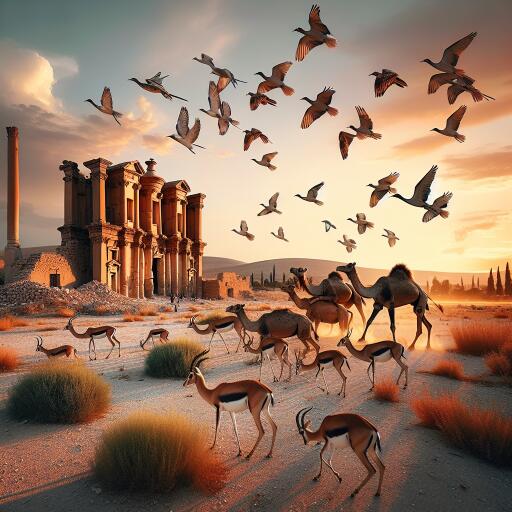
Exploring the Heart of the Pacific: Wildlife Conservation Efforts on Palmyra Atoll
In the vast expanse of the Pacific Ocean, the Line Islands form a magnificent arc that crosses the equator, stretching for over 2,350 kilometers. Nestled within this archipelago, roughly 1,600 kilometers south of Hawaii, lies the lush and vibrant atoll of Palmyra. This secluded paradise, captured by the Operational Land Imager on Landsat 8 in early 2024, stands as a testament to nature’s untouched beauty and resilience. Palmyra Atoll, designated as a U.S. marine protected area, is a complex network of islets, sand flats, and shallow reefs, all encircled by a protective coral barrier.
The atoll hosts an airstrip and a research station on its northern islet, Cooper Island, though it doesn’t have permanent residents. It primarily serves as a base for scientists embarking on expeditions to study its rich biodiversity and complex ecosystems. The surrounding waters and lands, extending up to 22 kilometers from the atoll, are safeguarded under the Palmyra Atoll National Wildlife Refuge. Further expanding the conservation efforts, the Pacific Remote Islands Marine National Monument encompasses a broader area, aiming to protect a plethora of oceanic, coral reef, and island habitats within a 495,000 square mile zone.
Palmyra’s isolation and ecological variety make it a crucial area for scientific investigation. Researchers are especially focused on understanding how the unique species in this region navigate their habitats, and whether the current boundaries of the marine protected areas sufficiently safeguard these inhabitants. Morgan Gilmour, a dedicated scientist at NASA’s Ames Research Center, has been at the forefront of these exploratory efforts. By tracking the movements of selected wildlife species, Gilmour and her team endeavor to evaluate the effectiveness of the existing conservation zones and to discern whether adjustments are necessary for enhanced protection.
In a significant venture initiated by The Nature Conservancy and supported by a coalition including the U.S. Geological Survey (USGS), the National Oceanic and Atmospheric Administration (NOAA), and various universities, wildlife tracking technologies were deployed across Palmyra in 2022. This collaboration aimed to gain insights into the movements of key species such as yellowfin tuna, grey reef sharks, and great frigatebirds, among others. Tracking data from these animals revealed intriguing patterns, notably that many are traversing beyond the marine protected areas, indicating a need to reassess the boundaries of these sanctuaries.
Gilmour, now aligning with NASA’s broader conservation initiatives, is leveraging this wealth of data as part of the agency’s Internet of Animals project. By integrating satellite-collected environmental data with wildlife tracking insights, this project aims to forge a deeper understanding of animal behaviors and habitat usage. Technologies including NASA’s Aqua satellite, NOAA’s GOES satellites, and the U.S.-European Jason-3 contribute to this endeavor, providing critical information on ocean conditions, sea surface temperatures, chlorophyll concentrations, and currents.
The resultant species distribution models are a fusion of satellite environmental data and wildlife tracking information. These models offer researchers a unique lens through which they can examine how marine and avian populations interact with their environment and predict how these relationships might evolve in response to climate change. Such pioneering research underscores the critical role of technological innovation in conservation, shedding light on the complex dynamics that underpin our planet’s diverse ecosystems.
As we continue to explore and understand places like Palmyra Atoll, the insights gained not only contribute to the field of ecological management but also underscore the importance of preserving our planet’s irreplaceable biodiversity. Through the combined efforts of conservationists, scientists, and global organizations, we can strive to maintain the natural heritage of such pristine environments for future generations to cherish and learn from.





Leave a Reply